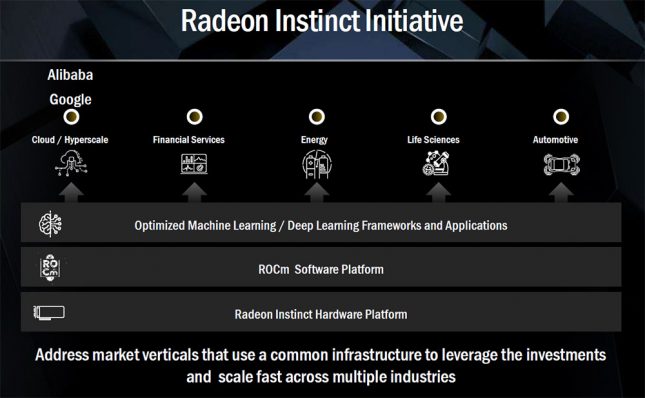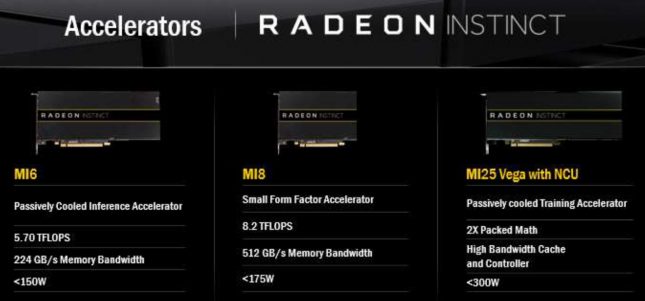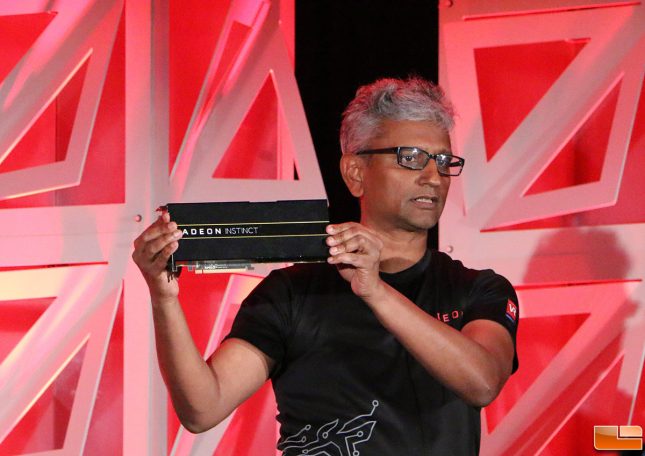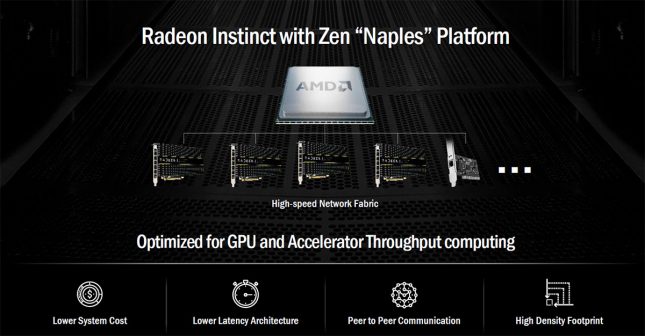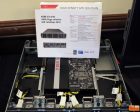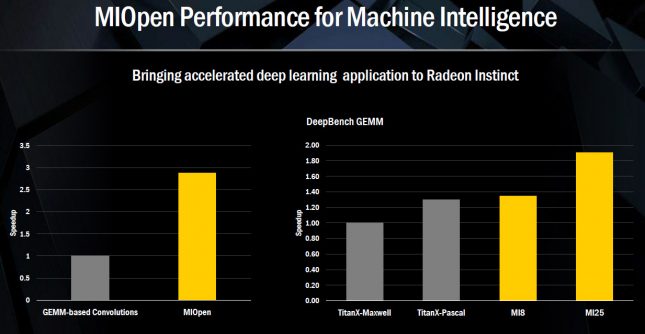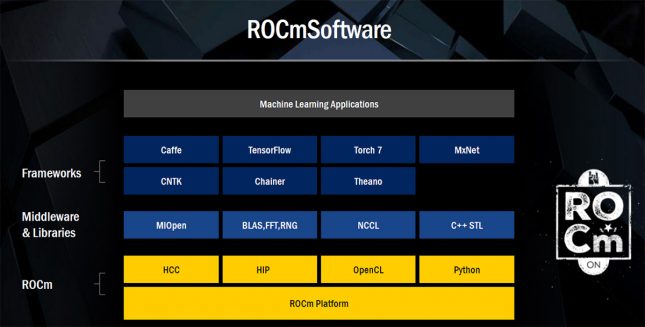AMD Radeon Instinct Accelerators Set To Change Machine and Deep Learning Applications
Earlier this morning AMD unveiled its new long term strategy to be the market leader in machine learning. To get where they want to be AMD is going to be announced a new brand of accelerators called Radeon Instinct to ensure AMD will be the leader in deep learning inference and training. Basically, if there is going ever be a skynet, AMD wants to be the company used to make it! In addition to the new hardware, AMD is also rolling out the MIOpen open-source library for such GPU accelerators along with new deep learning frameworks using AMD’s ROCm software.
Here is a quick video introduction to Radeon Instinct that was created by AMD.
AMD will be releasing three Radeon Instinct accelerators called the MI6, MI8 and MI25 aimed at enterprise users taht are doing machine learning. These three cards get their name from how much 16-bit floating-point TFLOP performance that they have. All three cards are passively cooled and used under 300 Watts of power The MI25 Vega with NCU card has 25 Teraflops of compute performance and is the most interesting card of the bunch as it used the yet to be announced VEGA GPU. The slide mentions that it is using a High Bandwidth Cache and Controller and we can only assume that HMB2 memory will be used on the Vega-based GPUs. Like the Radeon PRO WX series, all Radeon Instinct accelerators will be exclusively built by AMD and are expected to ship in the 1H 2017.
- Radeon Instinct MI6 – with Polaris GPU @ 5.7 TFLOPS at less than 150W board power and 16GB of GPU memory
- Radeon Instinct MI8 – with Fiji GPU @ 8.2 TFLOPS at less than 175W board power and 4GB of High-Bandwidth Memory (HBM)
- Radeon Instinct MI25 – with a Vega GPU @ 25 TFLOPS at less than 300W board power and likely HBM2
The Vega-powered MI25 has an impressive 25 TFLOPS of compute, so we can’t wait to see how that translates into gaming performance for desktop consumer graphics cards. Could this be with one VEGA 10 GPU with HBM2 memory? The NVIDIA GeForce GTX 1080 has roughly 9 TFLOPS and the GeForce GTX Titan X Pascal is at around 11 TFLOPS, so this is pretty exciting.
The AMD Radeon Instinct MI25 is a fairly large card and some people were speculating that it was a possibly a dual-GPU solution, but we think that the card is rather long due to the fact that it is a <300W solution that is being passively cooled.
AMD also showed off some servers that were pretty exciting with running between four and 16 Radeon Instinct MI25 cards! The AMD K888 G3 was running four AMD Vega MI25 cards and had 100 TFlops of compute while the Falcon Radeon Instinct cluster with 16 cards was rated at 400 TFlops of compute.
AMD was able to get a 3x performance increase with MIOpen versus other open programming languages (OpenCL or CUDA) with machine learning code. Compared to what NVIDIA is doing, the MI8 was able to beat the NVIDIA GeForce Titan X Pascal graphics card running DeepBench with the GEMM with the MI8 only being around for 2-3 weeks. The MI25 blows the Titan XP out of the water as according to the chart above it is about 50% faster!
“Radeon Instinct is set to dramatically advance the pace of machine intelligence through an approach built on high-performance GPU accelerators, and free, open-source software in MIOpen and ROCm,” said AMD President and CEO, Dr. Lisa Su. “With the combination of our high-performance compute and graphics capabilities and the strength of our multi-generational roadmap, we are the only company with the GPU and x86 silicon expertise to address the broad needs of the datacenter and help advance the proliferation of machine intelligence.”
Hardware is just have the problem for deep learning as you need to have good software, so MIOpen fits into the ROCm software ecosystem. The ROCm platform is also now optimized for acceleration of popular deep learning frameworks, including Caffe, Torch 7, and Tensorflow.
The folks over at TechARP posted up a video of the entire AMD Radeon Instinct Tech Briefing. It is over an hour long and certainly worth watching if you are interested in heterogeneous computing and where AMD is headed with it.

